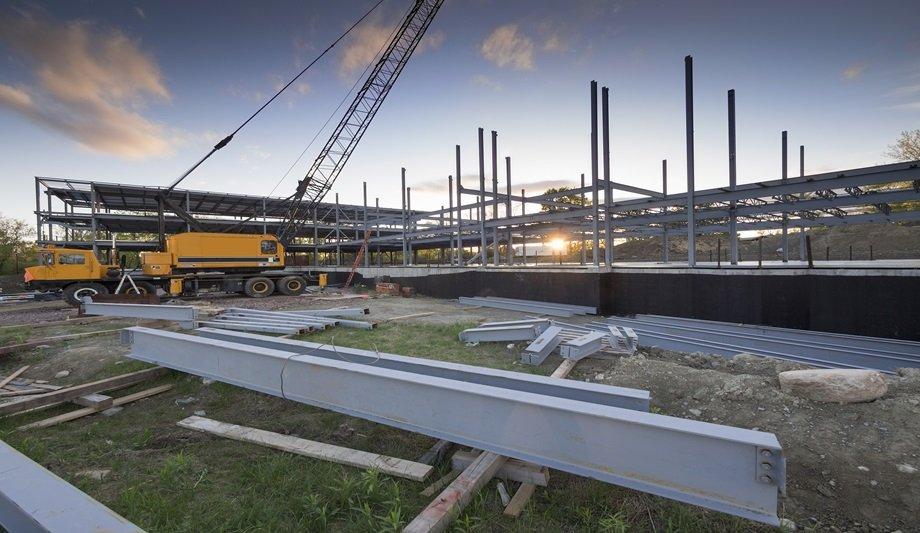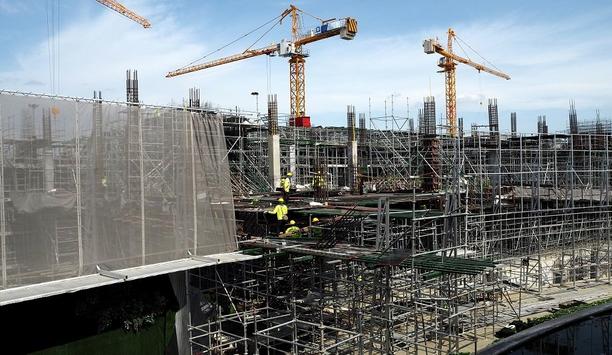The terms under the new Building Safety Act 2022 became enforceable from October 1st this year.
Here, Bob Glendenning, Fire Design Engineering Manager of Sherwin-Williams Protective & Marine Coatings, examines why creating a ‘Golden Thread’ of information within the new legislation is so important for those involved in the intumescent coatings industry.
Building Safety Act 2022
The Building Safety Act 2022 (BSA) has been developed as a new framework for the design, construction, and occupation of ‘higher risk’ buildings.
These buildings are defined as being a minimum of 18 metres or seven storeys in height and comprise of at least two domestic premises.
Building Safety Regulator (BSR)
The BSR aims to raise building safety standards and the performance of buildings
These regulations required that all existing occupied high-risk buildings should be registered with the new Building Safety Regulator (BSR) from April 6, 2023, and no later than October 1, 2023.
The BSR is an independent body that forms part of the Health and Safety Executive, which aims to raise building safety standards and the performance of buildings while also monitoring the competence of regulators and industry professionals.
Principal Accountable Person
The reality of this new legislation is that under the terms of the Act, a Principal Accountable Person who fails to register an occupied higher-risk building ‘without a reasonable excuse’ will be liable to either a fine or imprisonment for a term not exceeding two years.
The Principal Accountable Person is described as the organisation or person who owns or has responsibility for, the building. It may also be an organisation or person who is responsible for maintaining the common parts of a building, for example, corridors or lobbies.
The three Gateways provide evidence
The criteria for the Golden Thread require all relevant documents and evidence to be stored digitally
The Golden Thread is an information trail that runs through all of the three Gateways from the outset to completion and occupation so that end users can be assured of compliance, quality, and safety and have confidence in the products used to provide fire and life safety.
For the protection of structural steel with intumescent coatings, those who may need to submit information may include main contractors, architects, designers, specifiers, fabricators, and applicators. Indeed, any party who is responsible for fire safety critical elements or components. Importantly, the criteria for the Golden Thread require all relevant documents and evidence to be stored digitally to prove that adequate steps have been taken in the construction and ongoing maintenance of a building.
Gateway 1 – covering the planning stage.
This has been in force since August 1, 2021, and sets out the framework for the second and third stages. Applicants need to demonstrate that fire safety matters have been incorporated into the planning stage for all buildings. The Health and Safety Executive (HSE), who is now also the BSR, will be part of the consultation.
If a fire statement is required to be submitted with a planning application it will be an issue for consideration for the Local Planning Authority (LPA) when reaching its decision on the application. Contractors should take note that if the LPA considers the statement inadequate it can refuse the application.
- Early engagement and collaboration
Collaboration between all parties helps to clarify any points upfront before they become a problem
At Sherwin-Williams, our policy of early engagement and collaboration between all parties helps to clarify any points upfront before they become a problem with the subsequent knock-on effect on time and cost.
Engaging multiple stakeholders including designers, fabricators, and applicators early and consistently throughout the process is key to delivering a successful, safe, and cost-efficient solution.
- Safe and efficient structural fire protection approach
Working together, we share knowledge and help our clients to reach their goals. After all, we are all now part of this renewed responsibility. We encourage and fully support this early engagement.
With the correct information from the project team, we can provide information and guidance on a safe and efficient structural fire protection approach.
Gateway 2 – submitting building control approval to the Regulator.
The Regulator has 12 weeks to approve or reject these building control applications or to approve them
This should include written declarations covering the competency of the main contractor, and designer, a description of works and plans, and a planning statement from Gateway 1.
Importantly, there should be information about how evidence is being captured to maintain the Golden Thread. The Regulator has 12 weeks to approve or reject these building control applications or to approve them subject to the fulfilment of certain requirements.
- Notifiable changes
Any major changes at this stage will also need approval from the Regulator, and records of the controlled change including an explanation of compliance with Building Regulations will also need to be maintained.
The categorisation of major and ‘notifiable changes’ are still subject to consultation under the new legislation.
Gateway 3 – providing information to ensure the building is safe for occupation.
There is a requirement to submit a completion certificate application and provide updated plans
There is a requirement to submit a completion certificate application and provide updated plans. These plans should reflect the scale of the higher-risk building, key building information, a list of mandatory incident reporting, and signed declarations from the main contractor and principal designer that the works and building comply with Building Regulations.
Finally, confirmation that information for the Golden Thread has been handed over to the accountable person should also be declared. There is then a 12-week period for the Regulator to approve the application for a completion certificate.
We all have a role to play
Remember, responsibility lies with us all. Nobody in the supply chain can absolve themselves. The Accountable Person must have assessed all building safety risks and taken all reasonable steps to control them, give the safety case report to the Regulator on request, and apply for a building assessment certificate.
To be clear, the information stored in the Golden Thread needs to be accurate, easily understandable, up-to-date, and readily accessible.
- Good practice and compliance
The Golden Thread constitutes any relevant package of information that refers specifically to a project
In echoing the point made by Dame Judith Hackitt, we at Sherwin-Williams emphasise that the Golden Thread constitutes any relevant package of information that refers specifically to a project or programme of works.
This could come in various forms including a product specification, marked-up drawings, CAD data, a BIM model, a product/member DFT schedule, application records, or datasheets for example. As long as it provides evidence of good practice and compliance, it is relevant.
- Use of intumescent coatings
It is important to understand and work with this new process. It has been introduced for good reason and our message is not to underestimate your role whatever it may be from the main contractor through to the applicator.
We want our customers to embrace change for the better. Capturing relevant data on the use of our intumescent coatings contributes to best practices for their uses and for those people who move about in these buildings who surely have the right to expect the highest levels of safety. This information validates each key stage of The Golden Thread.
- Provide the right information
We should highlight that it is the responsibility of each Principal Accountable Person to provide the right information to the supply chain including those bidding on the intumescent fire protection package who in turn are then responsible for all information being passed onto us is accurate.
Also, bear in mind that this commitment to best practice and gathering of evidence of compliance is not just for the short term but for the lifetime of a building and will be highly valuable should anything happen during its occupation. Think of it as future-proofing life safety for everyone’s sake.













